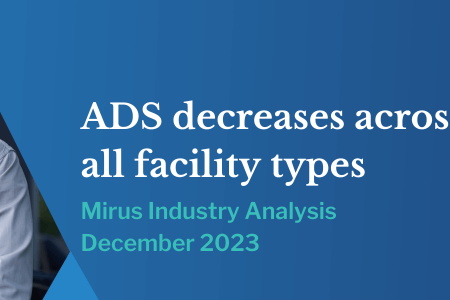Aged care 101: The industry in a nutshell
December 17, 2015 | Assessment and Optimisation

For anyone outside or just starting to enter the industry, Australian aged care can seem a giant that's quite difficult to understand. There are a myriad of technical processes, acronyms, peak bodies and types of providers – all of which seemingly continue to grow year after year.
So, with this in mind, we've put together a detailed article that covers everything you need to know, from LASA to ACFI. It's time to take a look at the aged care industry in a nutshell. This is aged care 101.
Where we are and where we're going
Before diving into some of the acronyms and provider types, it's firstly a good idea to understand where are, and where we're going.
In the space of just a few decades, the population of Australia has exploded from 15.6 million (1984) to 23.6 million (2014). This means the population of elderly Australians has grown from 1.58 million to 3.45 million. This is according to a piece of McCrindle research, which pointed out further growth over the next few decades. By 2044, there could as many as 7.75 million elderly Australians.
Why aged care needs an Uber moment https://t.co/wPzK2IGmvc #ageing pic.twitter.com/HCAcmPQicR
— World Economic Forum (@wef) December 10, 2015
This is going to mean one thing: a need for a substantial increase in the number of aged care facilities. Of course, such an increase will also require highly-trained carers in even greater numbers.
The acronyms you need to know
Like any field, there are a significant number of acronyms in aged care. For someone just getting started, we've put together a list below of the terms you need to know. Of course, there are a number more that My Aged Care and the Australian Institute of Health and Welfare publish.
- Aged Care Funding Instrument (ACFI): This is a tool that's used extensively in the aged care sector. It's designed to assess the various care needs of residents and then allocate appropriate subsidies to providers. It was put into effect back in 2008.
- Aged Care Assessment Team (ACAT): This is a group of health professionals that focus on determining who is eligible to enter a residential aged care facility.
- Aged Care Act 1997: A piece of Commonwealth legislation that means aged care can receive Australian government funding.
- Ageing in place: As we get older, our care requirements will likely increase. In a facility, this is called ageing in place.
- Basic daily fee: If a resident is moving into a home that receives subsidies from the government, then they may be asked to pay a contribution toward living costs.
- Daily Accommodation Payment (DAP): Similar to the above, the DAP is a small payment made on a regular basis, sometimes up to a month in advance.
- Refundable Accommodation Deposit (RAD): A lump-sum payment for accommodation costs in aged care homes like those explained above. It is refunded when the resident leaves the home.
What's the difference? Not for profit vs profit
There's a whole spectrum of operators in the aged care sector, but the difference between profit and not for profit is one area commonly prone to confusion. One is not better than the other in this case, but it is important to understand what drives these different kinds of operations.
Not for profit facilities are those that are designed primarily to serve the community. In most cases, churches and community groups run these operations, without any intention of growing profits. For some time, these have been some of the most significant operations in Australia.
Conversation is the driving force for change.
On the other hand, there are for-profit facilities. These are private companies and publicly listed companies that need to focus on generating a profit for shareholders. While it can seem at odds with the ethos of providing care to those in need, a goal of profit can lead to providers offering a range of care options as a way of staying competitive.
Understanding peak bodies
Peak bodies are one term that you'll certainly hear thrown around on a regular basis, and for good reason. Conversation is the driving force for change in nearly every industry across the globe, and things are no different in aged care Down Under. Peak bodies are focused solely on bringing issues to the fore, whether in regards to quality of care, funding for the industry or even something like the well-being of the nurses and providers.
Here are two of the biggest names in the industry:
- Leading Age Services Australia (LASA): One of the most significant bodies, LASA operate on behalf of the private sector as well as not for profits.
- Aged and Community Services Australia (ACSA): Representing the same areas, ACSA is another large national peak body.
Aged care is a sector constantly on the move, and it's one that's really showing no sign of slowing down. Every year, the number of elderly people climbs ever higher, which in turn means providers need to open new facilities and hire staff in response. The key to success in aged care is going to lie with highly effective facilities and well-trained staff, multiple funding sources and the use of cutting-edge technologies to make care easier.
To learn more about the industry, don't hesitate to reach out to Mirus today.


